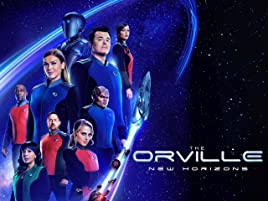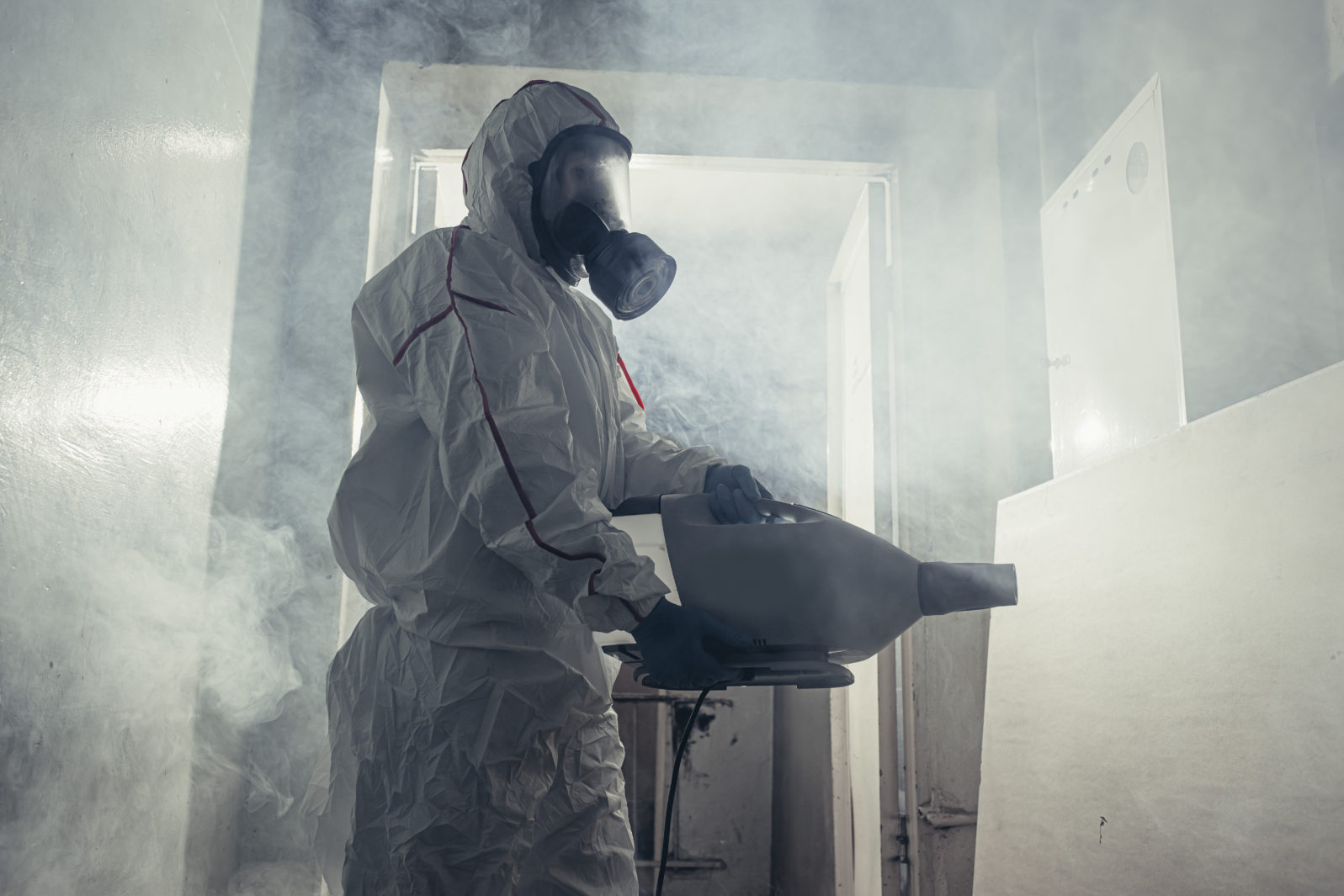The Orville Episode 2: Bacterial Assimilation? — It Gets Messy
A ship that crew members investigate turns out to be a deadly mixture of mechanical — and organic — materialEpisode 2 of Season 3 opens with the Orville crew beginning its negotiations with the Krill, an aggressive reptilian species that has joined a temporary alliance with the Planetary Union of flight-capable species to counter the new threat from the Kaylon, an artificially intelligent species.
A Krill moment:
The Orville group begin by discussing routes through the Krill territory, so the Union can explore the regions of space on the other side. The discussion grows tense when the admiral who has boarded the Orville for the negotiations, Admiral Paul Christie, mentions exploring the Kalarr Expanse (the “Shadow Realm”). The Krill become nervous about this request, telling Ed Mercer and Kelly Grayson, and Christie that demons dwell there. And that they have the ability to possess and persuade even the most righteous man to commit foul deeds. Ed, Grayson, and Christie are skeptical and, after discussing matters with the Admiral Halsey, they decide to go ahead with the exploration.
Throughout these events we learn that Dr. Finn and Admiral Christie were once married, and the marriage had ended on bad terms. Admiral Christie wishes to make amends and possibly rekindle their past relationship — and this is one of his reasons for joining the Orville crew for this exploration. Dr. Finn does not reciprocate his affections. She still feels somewhat bitter about the past but is willing to be kind and professional to the Admiral… for the most part.
As the ship flies into the Kalarr Expanse, the show does a good job creating an ominous sense of the place. The first thing that jumps out at the crew is the lack of stars in the region. As they fly on, they come across a strange vessel floating in the void. The ship does not register any signs of life, but the crew realizes that it is pressurized and has breathable air. So some of them land on the ship to have a look around. Personally, I would’ve worn a suit because it doesn’t make sense that the ship has breathable air but no signs of life. However, the crew assumes that the vessel may be stranded, and they’re going to explore it just in case.
While they’re walking around, they realize that the ship is some kind of mixture of mechanical and organic material. Admiral Christie approaches a glowing bulb grafted into the wall, and as he does so, the bulb opens up and hisses. He blinks for a moment but doesn’t think much of it.
Here, I will give the show props for excellent delivery: The writers don’t oversell the threat of the bulb via over-the-top dramatization. But the alert viewer will realize that this incident is bound to lead to some kind of contamination. And the scene is underplayed just enough to justify why the Admiral, portrayed as a man of good judgment, doesn’t think much of it at the time.
When the explorers return to the ship, the Admiral collapses and begins convulsing. They take him to sick bay and realize something is rewriting his DNA. Ed and his security officer Talla return to the strange vessel and reexamine the bulb. They find that it is projecting spores into the air and they realize that these bacteria are currently responsible for the Admiral’s predicament. Ed and Talla rush back to the Orville, but poor Admiral Christie finishes his “transformation” and cuts the ship’s power.
For the rest of the episode, it’s a race against time to find a way to counteract the agent before the alien which has transformed the Admiral’s body can infect the rest of the crew. Dr. Finn does find a way to destroy the creatures which have altered the Admiral. But the disease will cost the infected crew members their lives. Ed has misgivings about this so Dr. Finn suggests finding “Admiral Christie” (as he was), using his wedding ring which he’d kept since his divorce from Dr. Finn.
Luckily, the Admiral is still wearing it, despite his deformed hands, and the ship’s scanners are able to locate the ring. Dr. Finn has one last conversation with her ex-husband, hoping the convince the aliens to leave their ship and join the hostile vessel coming to intercept the Orville. Otherwise, she says, she’ll release her new pathogen and kill them all. This persuades the newborn aliens to leave, and the episode ends with Dr. Finn and Isaac the robot rekindling their old flame — a relationship I didn’t care about in the slightest.

I was tracking with the episode pretty well up until the end. The problem started the moment the ship lost power. The admiral uses his codes to deny the rest of the crew access to the computers. But if the alien invader was able to use the admiral’s access codes, that means it didn’t kill him outright. The creature can’t use to the man’s brain if the brain is completely destroyed.
Ed points out to others that deceased crew members might still be alive in some sense, bringing up the ethical dilemma of killing a large portion of the crew with Dr. Finn’s pathogen. But the writers sense no need to wrestle with the issue. The problem is thrown away in a single line delivered by Gordon, one of the ships pilot’s, who essentially says, “It’s us or them.”
If that’s the leadership’s attitude, then I feel bad for the Orville’s crew. Seems like Star Trek’s red shirts would fare better.
Furthermore, a strange conflict in tones hits the dialog when Dr. Finn begins her final conversation with the “possessed” admiral. She starts off sounding sympathetic, but then ends the conversation by simultaneously threatening the alien and her ex-husband, through appealing to Christie’s memories. She reminds him of how stubborn she is in an effort to persuade the alien that she’ll actually release the pathogen. Honestly, it felt more like she was telling her ex-husband off rather than begging an invading alien to leave the ship before she does something desperate. This left a sour taste in my mouth because by the time the scene was over, I wasn’t entirely sure what had just happened.
To make matters worse, there is no sense of regret on the part of the crew at the end of the episode, no discussion of whether any attempt will be made to save the admiral or the lost crew members. Nobody asks if fellow shipmates could’ve been saved. Everything is just hunky dory because the episode is over.
We have to sit and watch Dr. Finn and Isaac interact instead of reflect on what has just happened. And those aliens snatched a lot of their crew! Ed’s going to be pretty busy typing all the letters of condolences, yet there is no mention of this, no discussion of the moral dilemma, no justifying or condemning anything in anyway. This made the episode feel shallow. I would’ve given this episode a better review, were it not for the end. As it stands, Episode 2 was little better than your average B-movie at a Saturday matinee.
Here are some of my thoughts on Episode 1 of Season 3:
Here are Parts 1 through 3 of my review of Episode One: Should we love or hate an intelligent robot? Or care at all? In Season 3 of Orville that becomes a serious question. Is there more to Isaac the robot than metal? But how is that even possible? ? And why isn’t the question addressed?
When a robot commits suicide — an elegy for what? What’s frustrating about Episode 1 of Orville, Season Three is that robot Isaac’s claim to personhood is not ambiguous so much as confused and contradictory. We’re not supposed to “judge” Dr. Finn’s conflicted love for the robot. But that means not asking the obvious: Good heavens, is she dating a TOASTER?
and
Viewers, we witness — a robotic resurrection! In this final look at Episode 1 of Season Three, we see how love for a robot, unexamined, entails a loss of sense and meaning. Seth MacFarlane knew that the relationship needs some tension to justify the story, but he neglects the question of life, which is central to why we care.
